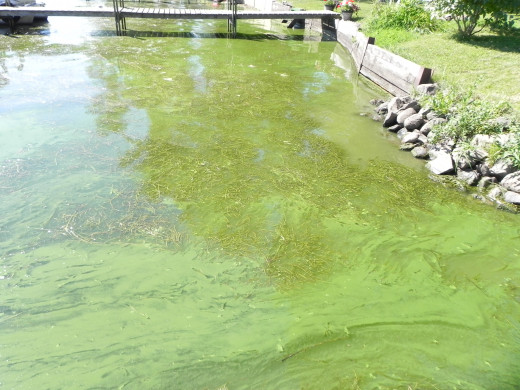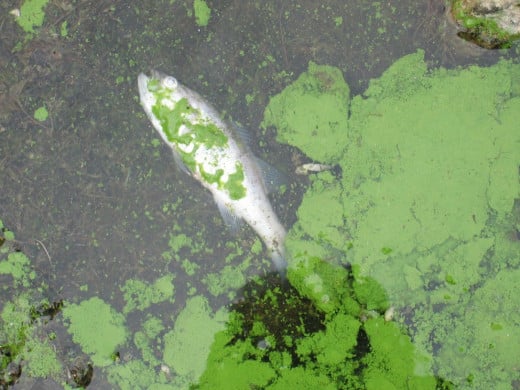The Consequences of Harmful Freshwater Algae Blooms

The Causes
On top of many ecological problems we face within our world today, there is another added to the list. With the prevalent usage of fertilizers among other things that are jam packed with excessive amounts of nutrients, freshwater algae blooms are an issue now more than ever. Taking this in mind, there are certain types of algae blooms that are beneficial to our environment and ecosystems, but this is not the main focus of this article.
The main cause of algal blooms are an excess of nutrients, notably being phosphates. One of the many ways these phosphates can enter our freshwater bodies are through drainage basins meant for rain, running off into lakes, bays, or even our oceans. Additionally, they can be introduced through dumping, which leads to trash and other forms of pollution corrupting our waters. Thermal pollution from factory settings and powerplants have also been known to contribute to this, as well as climate change. All of this leads to cyanobacteria, or blue-green algae, thriving.
In any case, be it fertilizer or run off, the outcome is almost always dire.

Hypoxia
Algae naturally occurs in most bodies of water that are left untreated by man. A good example of this would be a swimming pool. If you stop taking care of it by not emptying the filter and stop adding chlorine to it, within two weeks it'll be a cesspool of algae, E. Coli, and other harmful organisms.
The problem with algae blooms, however, lies within how they function. When a large amount of phosphates are introduced into a body of water, it directly affects the growth rate of algae, causing it to grow at a rapid pace. Furthermore, while the growth rate is sped up, the lifespan of each individual alga organism is still relatively short.
The rapid growth and death of this algae leads to a massive concentrate of dead tissues. Decay within water eats up oxygen, thus leading it to be hypoxic, or having low oxygen conditions.
In the aftermath, plant life, fish, and other animals that rely on these waters can die off in massive events.
Toxicity
While this differs depending on algae types, certain algae blooms are toxic to their surrounding environment.
Blue-green algae, the main cause of algae blooms within freshwater, has been observed to produce a few different types of toxins when in the right setting. An example of this would be microcystins, a neurotoxin that degrades and destroys nerve tissue in mammals. When in high enough concentrations, water treatment plants might be powerless to remove them from our tap water, advising local residents not to consume water from the tap.
Examples Within the World
One of the most notable examples of a harmful algae bloom are within both the U.S. and Canada simultaneously.
In the last twenty years, algae blooms within Lake Erie have been caused by agricultural runoffs, containing fertilizer and other devastating chemicals. Some places in Canada as well as Ohio, U.S., have been cut off from their tap and drinking water because of this.
Green Bay, Wisconsin, has a dead zone of hypoxic water that is still expanding, which can have horrific results in the years to come.
Lastly, Lake Okeechobee, Florida. As of July 2018, 90% of the lake's surface was covered in algae. Water drainage sites and the surrounding rivers affected by the algae blooms have seen an increase in respiratory illness due to the odor it omits. Where the rivers of Lake Okeechobee meet the ocean, the freshwater algae dies, but the overabundance of nutrients remains, feeding into the algae blooms on the coasts of Florida.

Take Aways
Overall, many harmful algae blooms can be avoided if only we are more careful with our resources. Only we have the power to prevent pollution and flourish within our environment.
However, if left unchecked, climate change caused by our folly will only continue to harm our planet, as well as ourselves. In the end, it's not just our freshwater sources that are affected, but everything else as well. It is our home, thus it is our duty to defend it.








